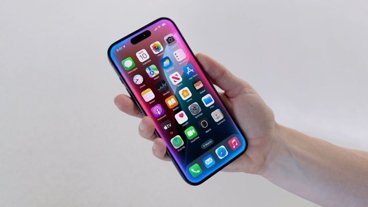Apple's widely-rumored decision to equip a 10th-anniversary iPhone with OLED could add approximately $50 million to incremental costs in the March quarter, eating slightly into profit margins, according to an analyst.
Gross margin will likely remain flat quarter-to-quarter at 38.8 percent, but this is a potential "pinch point," Cowen & Company's Timothy Arcuri said in an investor memo obtained by AppleInsider. OLED offers a number of advantages over LCD — such as flexibility and lower power consumption — but is often more expensive, not the least because relatively few suppliers are equipped to manufacture it on the scale a company like Apple needs.
Indeed some reports have suggested that Samsung could be Apple's exclusive supplier, possibly of 5.8-inch "fixed flex" screens. The Korean company has been an early pioneer of curved OLED, using it on the Edge models of its own Galaxy S6 and S7 phones, as well as the defunct Galaxy Note 7.
For Apple's December-quarter results — due to be announced on Tuesday — Arcuri is anticipating 76 million in iPhone shipments, a number roughly flat year-over-year, but with possible upside to revenue thanks to a large share of the more expensive 7 Plus, estimated to account for 23.5 million units versus the regular iPhone 7's 35 million. Only about 8 million iPhone SE units are thought to have been shipped.
In terms of other product lines, the analyst is predicting 13.5 million iPads, and 5.4 million Apple Watches. He suggested that Apple could have positive things to say about Watch Series 2 sales, and might even finally decide to break out the Watch from other results, giving official quarterly numbers.
Arcuri's March-quarter forecast includes 50.5 million iPhones, 10 million iPads, and 2.5 million Watches, as well as Apple resuming year-over-year growth ahead of the "iPhone X" launch. Apple saw its first revenue decline in 15 years during 2016, often linked to weak sales of the iPhone 6s versus the iPhone 6, which was Apple's first phone with a bigger screen sized more like rival Android devices.
 Roger Fingas
Roger Fingas








 Christine McKee
Christine McKee
 Marko Zivkovic
Marko Zivkovic
 Mike Wuerthele
Mike Wuerthele

 Amber Neely
Amber Neely
 Sponsored Content
Sponsored Content
 Wesley Hilliard
Wesley Hilliard










13 Comments
Analysts are 99/100 times wrong, so...
$50m? That's a lip on the radar. Anyway so sick of these so-called analysts and their blather. They don't know squat about Apple's plans or supply chain.
I'd rather Apple do what they need to in order to make a great product and not penny pinch to squeeze out an extra $5 profit per device. When you're making tens of billions of dollars in profits they should be doing what they need to in order to make great products and not worry about losing $50-100 Million in profits per quarter.
Wall St., yuck.
Doesn't that come out to about 72 cents per phone?
(better not tell Wall Street)